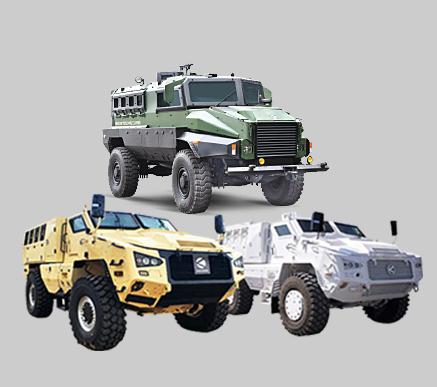𝐍𝐨𝐭 𝐅𝐫𝐨𝐦 𝐂𝐨𝐧𝐜𝐞𝐧𝐭𝐫𝐚𝐭𝐞 𝐍𝐅𝐂 𝐉𝐮𝐢𝐜𝐞𝐬 𝐌𝐚𝐫𝐤𝐞𝐭 𝐀𝐧𝐚𝐥𝐲𝐬𝐢𝐬 𝐍𝐞𝐚𝐫 𝐅𝐮𝐭𝐮𝐫𝐞 𝐓𝐨 𝟐𝟎𝟑𝟑
According to the Regional Research Reports, the global not from concentratenfc juices market size is estimated to grow from a million USD in 2022 to reach multi-million USD by 2033 at a CAGR of 5.7% from 2023 to 2033. The growth is primarily driven by several variables about which Regional Research Reports provides comprehensive insights and estimation in the global not from concentratenfc juices market research.
The Regional Research Reports published the report on “global not from concentratenfc juices market Report 2023 – Future Growth Opportunities, Latest Technological Trends, In-depth Analysis, and Forecast To 2033” provides the futuristic vision of the global not from concentratenfc juices market along with the market size (Revenue – US$ Million) and estimates for the duration 2023 to 2033. The aforementioned research study examines various market segments in terms of type, application, and regional. The competitive profiles of the top vendors of not from concentrate(nfc) juices products and their most recent developments are also included in the report.
Request To Download Sample of This Strategic Report: https://www.regionalresearchreports.com/request-sample/-not-from-concentrate-nfc-juices-market/FB-1394?utm_source=Free&utm_medium=Harsh+15+march
Market Trends and Drivers:
Health Consciousness: With rising health concerns, consumers are gravitating towards healthier beverage options. NFC juices are perceived as natural and nutritious, containing essential vitamins, minerals, and antioxidants.
Clean Label Movement: Consumers are demanding transparency in food and beverage ingredients. NFC juices, being minimally processed and free from additives, align with the clean label trend.
Demand for Natural Products: Growing awareness about the harmful effects of artificial ingredients and synthetic additives has led consumers to seek out natural alternatives. NFC juices, being free from concentrates and additives, cater to this demand.
Premiumization: Consumers are willing to pay a premium for high-quality, natural products. NFC juices, often positioned as premium beverages due to their production process and perceived freshness, benefit from this trend.
Convenience and On-the-go Consumption: With hectic lifestyles, consumers seek convenient and portable beverage options. Single-serve packs and ready-to-drink NFC juices cater to this demand, offering convenience without compromising on freshness or nutrition.
You Can Purchase Complete Report: https://www.regionalresearchreports.com/buy-now/-not-from-concentrate-nfc-juices-market/FB-1394?opt=2950&utm_source=Free&utm_medium=Harsh+15+march
Market Challenges:
Price Sensitivity: Despite the premium positioning, NFC juices can be relatively expensive compared to other juice options, which may limit mass-market penetration.
Supply Chain Constraints: Maintaining the freshness of NFC juices throughout the supply chain poses logistical challenges, especially for products with shorter shelf lives.
Seasonality: The availability of fresh fruits for NFC juice production is subject to seasonal fluctuations, affecting supply and pricing dynamics.
Competition from Other Beverage Categories: NFC juices face competition from a wide range of beverages, including carbonated drinks, bottled water, and plant-based milk alternatives.
Market Segmentation: The NFC juices market can be segmented based on:
Fruit Type: Orange, apple, pineapple, grapefruit, cranberry, and others.
Distribution Channel: Supermarkets/hypermarkets, convenience stores, online retail, specialty stores, and others.
Packaging Type: Bottles, cartons, pouches, and cans.
Region: North America, Europe, Asia Pacific, Latin America, and Middle East & Africa.
Key Players:
PepsiCo Inc.
The Coca-Cola Company
Nestlé S.A.
The Kraft Heinz Company
Campbell Soup Company
Hain Celestial Group
Ocean Spray Cranberries Inc.
Welch Foods Inc.
Döhler Group
Eckes-Granini Group
Get | Discount On The Purchase Of This Report: https://www.regionalresearchreports.com/request-for-special-pricing/-not-from-concentrate-nfc-juices-market/FB-1394?utm_source=Free&utm_medium=Harsh+15+march
Future Outlook: The NFC juices market is expected to continue its growth trajectory, driven by increasing consumer awareness about health and wellness, along with the rising preference for natural and organic beverages. However, market players need to innovate continuously to address challenges such as price sensitivity and supply chain constraints while capitalizing on emerging opportunities such as premiumization and convenience-driven consumption patterns. Additionally, expanding into untapped markets and diversifying product portfolios could further fuel market growth in the coming years.
According to the Regional Research Reports, the global not from concentratenfc juices market size is estimated to grow from a million USD in 2022 to reach multi-million USD by 2033 at a CAGR of 5.7% from 2023 to 2033. The growth is primarily driven by several variables about which Regional Research Reports provides comprehensive insights and estimation in the global not from concentratenfc juices market research.
The Regional Research Reports published the report on “global not from concentratenfc juices market Report 2023 – Future Growth Opportunities, Latest Technological Trends, In-depth Analysis, and Forecast To 2033” provides the futuristic vision of the global not from concentratenfc juices market along with the market size (Revenue – US$ Million) and estimates for the duration 2023 to 2033. The aforementioned research study examines various market segments in terms of type, application, and regional. The competitive profiles of the top vendors of not from concentrate(nfc) juices products and their most recent developments are also included in the report.
Request To Download Sample of This Strategic Report: https://www.regionalresearchreports.com/request-sample/-not-from-concentrate-nfc-juices-market/FB-1394?utm_source=Free&utm_medium=Harsh+15+march
Market Trends and Drivers:
Health Consciousness: With rising health concerns, consumers are gravitating towards healthier beverage options. NFC juices are perceived as natural and nutritious, containing essential vitamins, minerals, and antioxidants.
Clean Label Movement: Consumers are demanding transparency in food and beverage ingredients. NFC juices, being minimally processed and free from additives, align with the clean label trend.
Demand for Natural Products: Growing awareness about the harmful effects of artificial ingredients and synthetic additives has led consumers to seek out natural alternatives. NFC juices, being free from concentrates and additives, cater to this demand.
Premiumization: Consumers are willing to pay a premium for high-quality, natural products. NFC juices, often positioned as premium beverages due to their production process and perceived freshness, benefit from this trend.
Convenience and On-the-go Consumption: With hectic lifestyles, consumers seek convenient and portable beverage options. Single-serve packs and ready-to-drink NFC juices cater to this demand, offering convenience without compromising on freshness or nutrition.
You Can Purchase Complete Report: https://www.regionalresearchreports.com/buy-now/-not-from-concentrate-nfc-juices-market/FB-1394?opt=2950&utm_source=Free&utm_medium=Harsh+15+march
Market Challenges:
Price Sensitivity: Despite the premium positioning, NFC juices can be relatively expensive compared to other juice options, which may limit mass-market penetration.
Supply Chain Constraints: Maintaining the freshness of NFC juices throughout the supply chain poses logistical challenges, especially for products with shorter shelf lives.
Seasonality: The availability of fresh fruits for NFC juice production is subject to seasonal fluctuations, affecting supply and pricing dynamics.
Competition from Other Beverage Categories: NFC juices face competition from a wide range of beverages, including carbonated drinks, bottled water, and plant-based milk alternatives.
Market Segmentation: The NFC juices market can be segmented based on:
Fruit Type: Orange, apple, pineapple, grapefruit, cranberry, and others.
Distribution Channel: Supermarkets/hypermarkets, convenience stores, online retail, specialty stores, and others.
Packaging Type: Bottles, cartons, pouches, and cans.
Region: North America, Europe, Asia Pacific, Latin America, and Middle East & Africa.
Key Players:
PepsiCo Inc.
The Coca-Cola Company
Nestlé S.A.
The Kraft Heinz Company
Campbell Soup Company
Hain Celestial Group
Ocean Spray Cranberries Inc.
Welch Foods Inc.
Döhler Group
Eckes-Granini Group
Get | Discount On The Purchase Of This Report: https://www.regionalresearchreports.com/request-for-special-pricing/-not-from-concentrate-nfc-juices-market/FB-1394?utm_source=Free&utm_medium=Harsh+15+march
Future Outlook: The NFC juices market is expected to continue its growth trajectory, driven by increasing consumer awareness about health and wellness, along with the rising preference for natural and organic beverages. However, market players need to innovate continuously to address challenges such as price sensitivity and supply chain constraints while capitalizing on emerging opportunities such as premiumization and convenience-driven consumption patterns. Additionally, expanding into untapped markets and diversifying product portfolios could further fuel market growth in the coming years.
𝐍𝐨𝐭 𝐅𝐫𝐨𝐦 𝐂𝐨𝐧𝐜𝐞𝐧𝐭𝐫𝐚𝐭𝐞 𝐍𝐅𝐂 𝐉𝐮𝐢𝐜𝐞𝐬 𝐌𝐚𝐫𝐤𝐞𝐭 𝐀𝐧𝐚𝐥𝐲𝐬𝐢𝐬 𝐍𝐞𝐚𝐫 𝐅𝐮𝐭𝐮𝐫𝐞 𝐓𝐨 𝟐𝟎𝟑𝟑
According to the Regional Research Reports, the global not from concentratenfc juices market size is estimated to grow from a million USD in 2022 to reach multi-million USD by 2033 at a CAGR of 5.7% from 2023 to 2033. The growth is primarily driven by several variables about which Regional Research Reports provides comprehensive insights and estimation in the global not from concentratenfc juices market research.
The Regional Research Reports published the report on “global not from concentratenfc juices market Report 2023 – Future Growth Opportunities, Latest Technological Trends, In-depth Analysis, and Forecast To 2033” provides the futuristic vision of the global not from concentratenfc juices market along with the market size (Revenue – US$ Million) and estimates for the duration 2023 to 2033. The aforementioned research study examines various market segments in terms of type, application, and regional. The competitive profiles of the top vendors of not from concentrate(nfc) juices products and their most recent developments are also included in the report.
Request To Download Sample of This Strategic Report: https://www.regionalresearchreports.com/request-sample/-not-from-concentrate-nfc-juices-market/FB-1394?utm_source=Free&utm_medium=Harsh+15+march
Market Trends and Drivers:
Health Consciousness: With rising health concerns, consumers are gravitating towards healthier beverage options. NFC juices are perceived as natural and nutritious, containing essential vitamins, minerals, and antioxidants.
Clean Label Movement: Consumers are demanding transparency in food and beverage ingredients. NFC juices, being minimally processed and free from additives, align with the clean label trend.
Demand for Natural Products: Growing awareness about the harmful effects of artificial ingredients and synthetic additives has led consumers to seek out natural alternatives. NFC juices, being free from concentrates and additives, cater to this demand.
Premiumization: Consumers are willing to pay a premium for high-quality, natural products. NFC juices, often positioned as premium beverages due to their production process and perceived freshness, benefit from this trend.
Convenience and On-the-go Consumption: With hectic lifestyles, consumers seek convenient and portable beverage options. Single-serve packs and ready-to-drink NFC juices cater to this demand, offering convenience without compromising on freshness or nutrition.
You Can Purchase Complete Report: https://www.regionalresearchreports.com/buy-now/-not-from-concentrate-nfc-juices-market/FB-1394?opt=2950&utm_source=Free&utm_medium=Harsh+15+march
Market Challenges:
Price Sensitivity: Despite the premium positioning, NFC juices can be relatively expensive compared to other juice options, which may limit mass-market penetration.
Supply Chain Constraints: Maintaining the freshness of NFC juices throughout the supply chain poses logistical challenges, especially for products with shorter shelf lives.
Seasonality: The availability of fresh fruits for NFC juice production is subject to seasonal fluctuations, affecting supply and pricing dynamics.
Competition from Other Beverage Categories: NFC juices face competition from a wide range of beverages, including carbonated drinks, bottled water, and plant-based milk alternatives.
Market Segmentation: The NFC juices market can be segmented based on:
Fruit Type: Orange, apple, pineapple, grapefruit, cranberry, and others.
Distribution Channel: Supermarkets/hypermarkets, convenience stores, online retail, specialty stores, and others.
Packaging Type: Bottles, cartons, pouches, and cans.
Region: North America, Europe, Asia Pacific, Latin America, and Middle East & Africa.
Key Players:
PepsiCo Inc.
The Coca-Cola Company
Nestlé S.A.
The Kraft Heinz Company
Campbell Soup Company
Hain Celestial Group
Ocean Spray Cranberries Inc.
Welch Foods Inc.
Döhler Group
Eckes-Granini Group
Get | Discount On The Purchase Of This Report: https://www.regionalresearchreports.com/request-for-special-pricing/-not-from-concentrate-nfc-juices-market/FB-1394?utm_source=Free&utm_medium=Harsh+15+march
Future Outlook: The NFC juices market is expected to continue its growth trajectory, driven by increasing consumer awareness about health and wellness, along with the rising preference for natural and organic beverages. However, market players need to innovate continuously to address challenges such as price sensitivity and supply chain constraints while capitalizing on emerging opportunities such as premiumization and convenience-driven consumption patterns. Additionally, expanding into untapped markets and diversifying product portfolios could further fuel market growth in the coming years.
0 Σχόλια
0 Μοιράστηκε
4434 Views
0 Προεπισκόπηση



